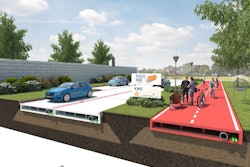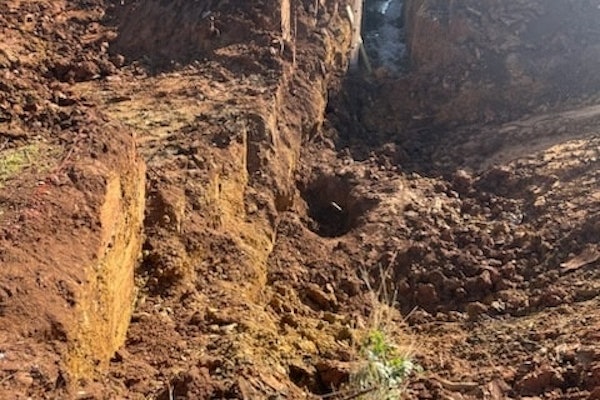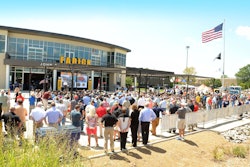
The Federal Highway Administration recently honored eight transportation projects from across the country with the 2015 Transportation Planning Excellence Awards.
The award, created by the FHWA and the Federal Transit Administration, is handed out every other year to show recognition to the “outstanding transportation planning practices.” The winners are chosen by a panel of experts based, in part, on the dedication to innovation and creativity.
The eight winners for 2015 are below:
Moving Forward Update 2035 Regional Transportation Plan
Winning Agency: Pikes Peak Area Council of Governments in Colorado Springs, Colorado
FHWA Description: “Selected as the 2015 TPEA’s Best of the Best award recipient, the “Moving Forward Update 2035 Regional Transportation Plan” used innovative techniques in the making of a collaborative, balanced and financially feasible transportation plan for the Colorado Springs area. In an 18-month process, the project team developed measurable goals and worked with diverse groups – federal agencies like the Environmental Protection Agency, Army Corps of Engineers, and Forest Service as well as state and local stakeholders – to develop the plan. Of its 17 performance-based goals, eight went beyond transportation, such as forecasting socio-economic growth, measuring habitat conservation, estimating air pollution emissions, and predicting changes in water quality.”
Mt. Hood Multimodal Transportation Plan
Winning Agency: Oregon Department of Transportation
FHWA Description: “This comprehensive plan for the 70-mile Mt. Hood Highway corridor identifies new travel options and improves safety for millions of annual visitors and several rural communities. Due to environmental and financial constraints, US 26 could not be widened, forcing ODOT to find innovative solutions to enhance safety and reduce congestion. The plan prioritizes 38 projects such as installing intelligent transportation systems, building a bicycle/pedestrian bridge, and increasing the number of daily express bus runs.”
Bus Stop Accessibility Study
Winning Agency: Roanoke Valley-Alleghany Regional Commission in Roanoke, Virginia
FHWA Description: “To upgrade bus stops and improve pedestrian accessibility, the Roanoke Valley project team created a bus stop activity index based on FTA data to prioritize stops needing infrastructure investment. The Bus Stop Accessibility Study developed measures that considered ridership and frequency of paratransit trips. The innovative evaluation process led to one major bus route adjustment and funding for pedestrian enhancements to bus stops along a high-activity, low-income corridor.”
Humanizing Infrastructure: Design for the Replacement of I-95
Winning Agency: Pennsylvania Department of Transportation
FHWA Description: “To reconnect neighborhoods isolated from the Delaware River by eight lanes of interstate highway, PennDOT engaged in a planning and urban design initiative to reconstruct an I-95 interchange in Philadelphia. PennDOT partnered with a waterfront group and received foundation funds to design welcoming underpasses, multimodal accommodations, and green spaces through and around the interchange. Residents of Philadelphia’s river wards will enjoy 10-foot wide sidewalks, bike paths, upgraded trolley tracks and stops, improved pedestrian crossings, LED lighting, “green” storm water infrastructure, clear sound barriers to maintain river views and public art in the highway underpasses that reflects the history of Lanape Native Americans.”
4th Street/ Prater Way Bus RAPID Transit Project
Winning Agency: Regional Transportation Commission of Washoe County in Reno, Nevada
FHWA Description: “The 4th Street/Prater Way Bus Rapid Transit project connects downtown Reno with Sparks through enhanced zero-emission bus rapid transit service, accessible sidewalks, and bike lanes. Project leaders expect the BRT line will spur economic development and improve quality of life in an area where 59 percent of households report incomes below $20,000 by connecting residents to nearly 39,000 jobs, the University of Nevada-Reno and a community college. With daily volumes of 3,411 pedestrians, 600 bicyclists, and 39 wheelchair users, the corridor will enhance safety and connectivity with accessible sidewalks and bike lanes. The 4th Street/Prater Way Bus RAPID Transit project received a $16 million TIGER grant and will begin construction in 2016.”
Chattanooga-Hamilton County/North Georgia Transportation Planning Organization Community-Sensitive Performance-Based Planning
Winning Agency: The City of Chattanooga, Tennessee
FHWA Description: “To balance investments in the local community with the need to increase the region’s economic competitiveness, the Chattanooga-Hamilton County/North Georgia Transportation Planning Organization (TPO) developed a framework for its 2040 Regional Transportation Plan that categorized projects by its local, regional and statewide importance. Plan authors scored potential projects with performance measures – such as reduction in vehicle miles, access to community resources, and closing gaps in bicycle, pedestrian and transit networks – according to the goals of each category as well as travel impacts. By prioritizing the highest-ranking projects in each category, the TPO selected projects that were not only diverse in scale, but also in the modes they benefited. As a result, bicycle and pedestrian investment doubled, transit capacity investment increased 6 percent, and roadway capacity investment decreased 20 percent.”
Minnesota’s 20-Year State Highway Investment Plan
Winning Agency: Minnesota Department of Transportation
FHWA Description: “The Minnesota 20-Year State Highway Investment Plan guides the state DOT’s investment decisions on 12,000 miles of state highway over 20 years. The plan provided for $18 billion to be invested, although projected needs total $30 billion. Using risk performance and scenario-based planning techniques, MnDOT developed priorities – safety, new multi-modal connections, economic development, and quality of life improvements – to minimize the impact of that $12 billion gap. The project team used a variety of creative communication techniques, such as an online interactive scenario tool and online map, in addition to traditional strategies, to educate and engage the public. The site received more than 900 visitors, 565 of which provided input.
Connect North Corridor: Taking Transit Where No Transit Has Gone Before!
Winning Agency: Capital Metropolitian Transportation Authority in Austin, Texas
FHWA Description: “Capital Metro received an FTA Livability Grant in 2011 to conduct an Alternatives Analysis in a 28-mile highly congested, rapidly growing corridor extending from central Austin to the nearby city of Georgetown, Texas. Since more than half of the study area falls outside of the Capital Metro service area, the planning team undertook a thoughtful and comprehensive public outreach approach to generate support to add transit services along with new development. With that thorough public engagement strategy, Capital Metro developed a package of transit improvements that include new park-and-ride lots, express routes, bus rapid transit, and local bus service. The first phase of services is planned to begin by 2016.”












